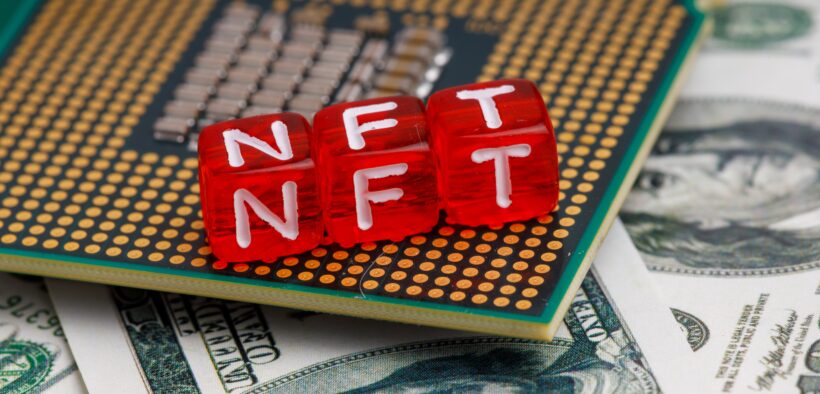Hermès v. Rothschild: The First NFT Trademark Trial
Share

Image Credits: @metelevan on Unsplash (Unsplash License)
Hermès is a French luxury brand that was created in 1837 in Paris. It specializes in leather goods, bags, and tableware. The brand has been identifiable by its many popular bags. Notably, their Birkin bag has become a status symbol of wealth and luxury since its creation in the 1980s.
The Birkin bag was created in 1984 by former Hermès chief executive Jean-Louis Dumas. It was created for Paris-based British actress Jane Birkin after the actress was upgraded to sit next to Dumas on an Air France flight. On this flight, the contents of her bag spilled and she complained about needing a handbag with pockets. This interaction inspired the creation of one of, if not the most, famous bags in history. The Birkin bag now sells for thousands of dollars, and the price can go up to hundreds of thousands of dollars. Additionally, there is an air of exclusivity to ensure the continual popularity of the bag and limit the amount of people who can own one. It even doubles as an investment because of its value.
Mason Rothschild is a multimedia artist, marketing strategist, and entrepreneur who has a background in the fashion industry. In December 2021, Mason Rothschild created images of faux-fur-covered Birkin handbags, calling them “MetaBirkins.” He sold them as “NFTs,” which are non-fungible tokens. These NFTs sold the image of the “MetaBirkins” collection that was named from numbers 0 to 99, and they have been sold for prices comparable to its real-life counterpart.
NFTs are units of data assets based on blockchain technology. They are all assigned unique identifiers and can be exchanged, sold, or traded, but they are not interchangeable. They are attached to digital media files that could be the image of a handbag or the virtual version to be worn in a virtual world.
When Rothschild originally sold the “MetaBirkins,” he described them as a tribute to Hermès’ most famous handbag. He even said in an interview that he sold the NFTs of the digital images of “MetaBirkins” to see if he could recreate the same level of exclusivity and investment as the original. Ultimately, he saw that there was not a great difference between the real-life commodity and the digital one, with people buying these NFTs believing there to be an Hermès affiliation with the collection.
In December 2021, Hermès International and Hermès de Paris, Inc. (collectively, “Hermès”) sent Mason Rothschild a cease and desist letter, claiming that he was violating federally-registered trademarks by selling NFTs for digital images of the “MetaBirkins.” Rothschild argued that the First Amendment protects NFTs from the violation of trademark rights because it gave him the right to create any art based on his interpretation of the world. He changed his position on why he created the NFTs to “a commentary on fashion’s history of animal cruelty, and its current embrace of fur-free initiatives and alternative textiles.”
Due to Rothschild’s unwillingness to meet the demands of the cease and desist letter, Hermès filed a lawsuit against him in a New York federal court on January 14. The company accused him of federal and common law trademark infringement, false designation of origin, trademark dilution, cybersquatting and injury to business reputation and dilution under New York General Business Law. They wanted monetary compensation for the damages, which included the profits Rothschild made from selling the NFTS, and wanted him barred from using his trademarks again.
The Court denied Rothschild’s motion to dismiss. Although the marketing and sale of “MetaBirkins” NFTs was not deemed copyright infringement under Rogers v. Grimaldi (1989) because they were used in noncommercial speech, the Court was still unable to resolve the disputes at the motion to dismiss that the use of the trademark was not artistically relevant and was explicitly misleading as to the source or content of the work. The court needed to decide whether the “MetaBirkin” NFTs were a genuine form of artistic expression or an attempt to cash-in on the “highly exclusive and uniquely valuable brand name.” Therefore, Judge Rakoff looked at the case through the perspective of the consumer to decide.
“The artistic relevance prong ensures that the defendant intended an artistic – i.e., noncommercial association with the plaintiff’s mark, as opposed to one in which the defendant intends to associate with the mark to exploit the mark’s popularity and good will.” This is the precedent established by the Louis Vuitton Malletier S.A, v. Warner Bros. Ent. Inc case. The threshold for artistic relevance was not met because there seemed to be significant proof that Rothschild had intended to associate the “MetaBirkins” with the popularity and prestige of Hermès’ Birkins instead of an artistic association.
Additionally, the amended complaint contains sufficient allegations that Rothschild’s use of the “MetaBirkins” title explicitly misled the consumers, with evidence of confusion from both consumers and the media. Both believed that the “MetaBirkin” collection had an affiliation with Hermès and mistakenly reported that. Other evidence of explicit misleading could be seen through his bad faith in adopting the name in order to experiment on whether the image and bag name would make the NFTs more desirable.
In early February 2023, a Manhattan federal jury concluded that the “MetaBirkin” NFTs had the potential to confuse consumers and awarded Hermès $133,000 in damages for trademark infringement, dilution, and cybersquatting. However, in early March, Hermès filed for another motion that requested Rothschild to relinquish all materials to the MetaBirkins NFT to Hermès. Rothschild responded with a request for the Court to deny Hermès’ motion as well as for the Court to order the use of a disclaimer with the promotion and sales of MetaBirkins to protect his and MetaBirkin owners’ First Amendment rights while eliminating confusion about the association with Hermès.
The ongoing battle between Hermès and Rothschild is the first NFT Trademark Trial, with NFTs skyrocketing in popularity over the last two years, and viewed under the lens of intellectual property law. It has become a critical topic regarding art and copyright infringement in the digital sphere while testing the boundaries and laws of the real world.


Want to get involved?
Connect with us! Connect with us!